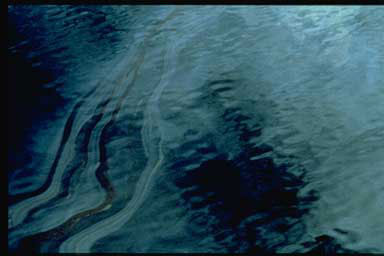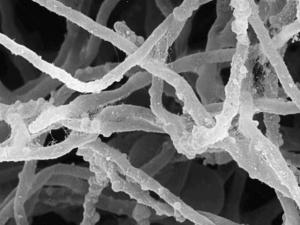Bioremediation
Introduction
Bioremediation refers to the use of microorganisms to degrade contaminants that pose environmental, and especially human risks. It has become an accepted remedy to clean-ups due to its safety and convenience. The process relies on the microorganisms that are natural to the soil, and also allows scientists to solve the problem right at the site of contamination. [1] Bioremediation processes typically involve many different microbes acting in parallel or sequence to complete the degradation process. The ability of microbes to degrade a vast array of pollutants makes bioremediation a widely applicable technology that can applied in different soil conditions [3].
New applications of bioremediation continue to be developed to degrade hazardous chemicals, although there are similarities between approaches. A widely used approach involves stimulating a group of organisms in order to shift the microbial ecology toward the desired process. This is termed "Biostimulation." The other widely used approach is termed "Bioaugmentation" where organisms selected for high degradation abilities are used to inoculate the contaminated site [3].
Example Pollutants
Pollutants found in soils present a variety of different human health risks including direct toxicity, as well as bioaccumulation in plant and animal tissue eventually consumed by humans. Some priority pollutants and their origins are found below:
1) Petroleum byproducts: BTEX - benzene, toluene, ethylbenzene, and xylene - are byproducts of petroleum products. The biodegradability of these compounds is relatively well known and remediation can be achieved by creating favorable conditions for BTEX degrader's growth. PAH - Polycyclic aromatic compounds remain on the soil surface and are hard to degrade than BTEX [3].
2) MTBE - Methyl tert-butyl ether is a gasoline additive introduced to replace lead. MTBE raises the oxygen content of fuel, allowing for more complete combustion and less emissions. MTBE, however, is highly soluble, does not adsorb well in soil and can therefore move quickly through soil and into groundwater [4].
3) PCB - Polychlorinated bhiphenols are used in industrial applications, are very recalcitrant, and many are known carcinogens.
4) Chlorinated solvents (example TCE and PCE) are used extensively as cleaning agents. Plumes have been found to contaminate groundwater below dry cleaners in many places, including Davis, Ca. Many chlorinated solvents are carcinogenic. TCE can be degraded to vinyl chloride under anaerobic conditions. Vinyl chloride, in tern, needs different conditions to transform, and this should be seriously considered due to its high toxicity [3].
Other contaminants include residuals from flares (perchlorate) and explosives (TNT, RDX); metals (chromium, lead); plutonium and uranium; polynuclear aromatic compounds; potassium and nitrogen. Much of the high levels of these contaminants found in nature is a result of human activity [3]
Applications of Bioremediation
Polynuclear aromatic compounds (PHAs)in contaminated soils can be treated with bioremediation [5]
Exxon Valdez Oil Spill in Prince William Sound [9]
Monitoring
To monitor bioremedation presence in soil, one can search for special activity that microorganisms can preform in the environment. There are two common ways to test for functional genes involved for the desired degradation of a compound. First, specific DNA hybridization probes are used to indicate potential for the organisms to degrade the desired compound. Second, specific RNA hybridization probes are used to indicate the expression of the functional genes in the environment [3].
To determine if the degradation of a desired compound is the result of abiotic or biotic activity, one can performed a controlled laboratory experiment with the presence of the pollutant in a sterile control and a microcosm of the environment of interest. The sterile control shows the non-biological contribution to the degradation or disappearance of the pollutant (e.g. adsorption to clay particles). The microcosm simulates the microbial contribution to the degradation of the pollutant in the natural environment. From the results of the experiment shows whether the disappearance of the pollutant was the result of microbial biodegradation or non-biological mechanism [3].
Degradation Pathways
Example Microorganisms
Pseudomonas putida is a gram-negative soil bacterium that is involved in the bioremediation of toulene, a component of paint thinner. It is also capable of degrading naphthalene, a product of petroleum refining, in contaminated soils. [2]
Industrial bioremediation is used to clean up wastewater. Most treatment systems rely on microbial activity to remove unwanted compounds from the wastewater, for example fixed nitrogen compounds (i.e. ammonia). The reduction of ammonia to dinitrogen gas involves two different microbes. First, Nitrosomonas europaea reduces ammonia to nitrite. Then, Paracoccus denitrificans reduces nitrite to dinitrogen gas. Therefore, the nitrogen pollution in the wastewater is eliminated as the gas escapes to the atmosphere. Denitrification is the process of consuming fixed forms of nitrogen as the electron acceptor in anaerobic conditions and reducing it to dinitrogen gas [2].
The lignin-degrading white rot fungus, Phanerochaete chrysosporium, exhibit strong potential for bioremediation of: pesticides, polyaromatic hydrocarbons, PCBs, dioxins, dyes, TNT and other nitro explosives, cyanides, azide, carbon tetrachloride, and pentachlorophenol. White rot fungi degrade lignin with nonselective extracellular peroxidases, which can also facilitate the degradation of other compounds containing similar structure to lignin within the proximity of the enzymes released [6].
The radiation-resistant Deinococcus radiodurans is an extremophile bacterium that is genetically engineered for the bioremediation of solvents and heavy metals. An engineered stain of Deinococcus radiodurans has been shown to degrade ionic mercury and toluene in radioactive mixed waste environments [7].
Methylibium petroleiphilum (formally known as PM1) is a bacterium is capable of methyl tert-butyl ether (MTBE) bioremediation. PM1 degrades MTBE by using the contaminant as the sole carbon and energy source [8].
Current Research
Pseudomonas putida has been found to be useful in the detection of certain chemicals, such as land mines. On the grand scale, a linkage between the bacteria's ability to degrade TNT and the explosive compound found in land mines has inspired research to utilize P. putida as a way of detecting land mines from soil content. TSCA Experimental Release Application Approved for Pseudomonas putida Strains
References
1. States Environmental Protection Agency, "A Citizen's Guide to Bioremediation" 2001.
2. Nitrification and Denitrification Wastewater Treatment. No. 5536407. 16 July 1996.
3. Sylvia, D. M., Fuhrmann, J.F., Hartel, P.G., and D.A Zuberer (2005). "Principles and Applications of Soil Microbiology." New Jersey, Pearson Education Inc.
4. States Environmental Protection Agency, "MTBE," 2007
5. Wilson, S. C., and Kevin C. Jones (1993). "Bioremediation of Soil Contaminated with Polynuclear Aromatic Hydrocarbons (PHAs): A review." Environmental Pollution. 81: 229-49.
Edited by student of Kate Scow


